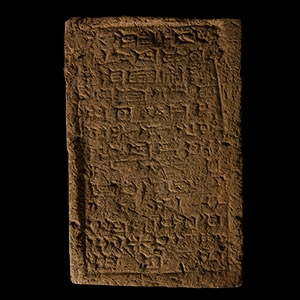Home > Auctions > 4 June - 8 June 2024
Ancient Art, Antiquities, Natural History & Coins
Auction Highlights:
Ex Surrey, UK, collection of a gentleman, 1960-2000s.
In 563 A.D., Paul the Silentiary visited Hagia Sophia in Constantinople and described the wondrous lighting effects, ‘Thus is everything clothed in beauty…no words are sufficient to describe the illumination in the evening: you might say that some nocturnal sun filled the majestic church with light.’ The church was lit by polycandela, an early type of candelabra that held glass oil lamps rather than candles. The lamps were either conical or shaped like round bowls with an elongated stem attached beneath. An effective and very atmospheric source of lighting, polycandela required considerable skill in casting and glasswork. Amidst the burning of incense and the chanting of prayers, the flickering light must have helped to inspire pious devotion. Contemporaries certainly attest to this feeling and among the surviving accounts, that of Arculf, Bishop of Gaul, is particularly affecting. In 670 he went on a pilgrimage to Jerusalem and visited the Church of the Ascension, ‘…to the customary light of the eight lamps…on the night of the feast of the Lord’s Ascension it is usual to add innumerable other lamps; and under the terrible and wondrous gleaming of these, pouring out copiously through the shutters of the windows, all Mount Olivet seems not alone to be illuminated, but even to be on fire, and the whole city, situated on the lower ground nearby, seems to be lit up.’
Acquired in the mid 1980s-1990s.
From the family collection of Mr S.A., Switzerland, thence by descent.
Private collection since the late 1990s.
This object reproduces a building of three levels: it belongs to a processional pole which supported a Byzantine bronze cross, the lower end of which fitted into the slot visible on the top of the drum. This object, which remains above all a decorative element, recalls by its structure a Byzantine church with its cross-shaped plan: architectural models reproducing religious buildings were very appreciated by Byzantine craftsmen (especially in the capital Constantinople), who used these structures to produce not only the cross holders but also the reliquaries, host boxes, or censers. Originally, this construction was supported by four columns of which only the capitals and a few fragments of the shaft remain. The presentation and demonstration of a cross to the faithful could take place during different celebrations of the Christian liturgical calendar, or even during certain civil ceremonies, or taking place in a princely court.
Private collection Mr S.A., Switzerland, before 1992, thence by descent.
According to the Christian tradition, Saint George would have lived between the end of the 3rd century and the beginning of the 4th century: born into a noble Christian family, he became an officer in the Roman army and was then named a prefect by Diocletian. But when the same emperor decided to resume the persecutions, Saint George became a victim despite his important political rank. His role in the development of the faith is so important that he is included among the Great Martyrs of the Eastern Church and his fight against the dragon becomes a symbol par excellence of the fight for Good which defeats Evil. In the Christian symbolism of the Middle Ages, the circle, a perfect geometric shape which has neither beginning nor end, designates the universe whose centre is the source and thus evokes Jesus, the man-light.
From the collection of a gentleman, acquired on the London art market in the 1990s.
Cf. for some of the represented symbols on medallions Wamser, L., Die Welt von Byzanz - Europas Östliches Erbe, München, 2004, items 577, 582; Faraone, C.A., 'Text, Image and Medium, The Evolution of Graeco-Roman Magical Gemstones' in Entwistle, C., Adams, N., Gems of Heaven, recent research on engraved Gemstones in Late Antiquity, c. AD 200-600, London, 2011, pp.50-61, pls.2 a-c.
The text surrounding the angel recites the verses of Psalm 90 (Heb.91) in the ‘Great Reward Prayer’ (Μεγάλο Απόδειπνο): …Ο κατοικών εν βοηθεία τού Υψίστου, εν σκέπη τού Θεού τού ουρανού αυλισθήσεται. Ερεί τώ Κυρίω, Αντιλήπτωρ μου εί, καί καταφυγή μου… = …He who dwells in the shelter of the Most High will rest in the shadow of the Almighty. I will say of the Lord, 'He is my refuge and my fortress…'
From the collection of a London, UK, gentleman, 1980-1990s.
This lot has been checked against the Interpol Database of stolen works of art and is accompanied by a search certificate number no.12112-217763.
UK private collection before 2000.
On the UK art market.
Property of a London gentleman.
From a collection acquired on the UK art market from various auction houses and collections mostly before 2000.
From an important Cambridgeshire estate; thence by descent.
Previously from the estate of a West Sussex, UK, collector.
From a collection acquired from various auction houses in the UK.
From the estate of Mr R.W., a private Wiltshire, UK, collector; thence by descent.
This lot has been checked against the Interpol Database of stolen works of art and is accompanied by search certificate no.12314-215541.
Votive cones are one type of royal foundation deposit, objects that were buried in the walls and beneath the floors of important buildings during construction to sanctify the site and to create a historical memory of the ruler and his achievements. Lipit-Ishtar was the fifth king of the Dynasty of Isin, which was founded after the collapse of the Third Dynasty of Ur. He is famous as having published a series of laws in the Sumerian language anticipating the code of Hammurabi by more than a century.
Previously from the estate of a West Sussex, UK, collector.
From a collection acquired from various auction houses in the UK.
From the estate of Mr R.W., a private Wiltshire, UK, collector; thence by descent.
Votive cones are one type of royal foundation deposit, objects that were buried in the walls and beneath the floors of important buildings during construction to sanctify the site and to create a historical memory of the ruler and his achievements.
Specialised collection of cuneiform texts, the property of a London gentleman and housed in London before 1988.
Thence by descent to family members.
Examined by Professor Wilfrid George Lambert FBA (1926-2011), historian, archaeologist, and specialist in Assyriology and Near Eastern archaeology, in the late 1980s and early 1990s.
The collection is exceptional for the variety of types, including some very rare and well preserved examples.
Accompanied by a copy of previous typed and illustrated cataloguing sheets.
Cf. The Oriental Institute Museum, Woods, C. ed., Visible Language: Inventions of Writing in the Ancient Middle East and Beyond, University of Chicago, 2010, p.68, for this type of object and the whole article for relevant discussion.
The tokens sealed within the bulla are believed to have been used as part of the accounting process in Sumerian or early Uruk agriculture.
From specialised collection of cuneiform texts, formed in the 1950s-1990s.
The property of a London gentleman and housed in London, thence by descent to family members.
Examined by Professor Wilfrid George Lambert FBA (1926-2011), historian, archaeologist, and specialist in Assyriology and Near Eastern archaeology, in the late 1980s and 1990s.
The collection is exceptional for the variety of types, including some very rare and well preserved examples.
This lot has been checked against the Interpol Database of stolen works of art and is accompanied by a search certificate number no.12117-215351.
Cf. for a similar example in the Metropolitan Museum of Art, accession no.1988.433.3.
Salvatore Monaco, Archaic Cuneiform Tablets from Private Collections, CUSAS 31, p. 97, no. 74 (CDLI 464160).
From a collection acquired on the UK art market from various auction houses and collections mostly before 2000.
From an important Cambridgeshire estate; thence by descent.
Cf. cuneiform text relating to Nebuchadnezzar II and the restorations at Babylon on a terracotta cylinder from Babylon and now in the Metropolitan Museum of Art, New York, under accession no.86.11.282.
The construction of the Hanging Gardens of Babylon and the destruction of Jerusalem's temple are ascribed to Nebuchadnezzar II. He is featured in the Book of Daniel and is mentioned in several other books of the Bible.
109 - 120 of 2809 LOTS

.jpg)

.jpg)
.jpg)
.jpg)
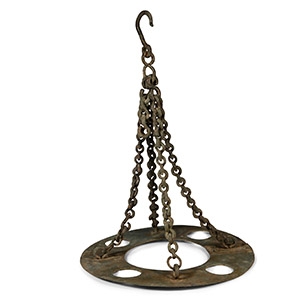
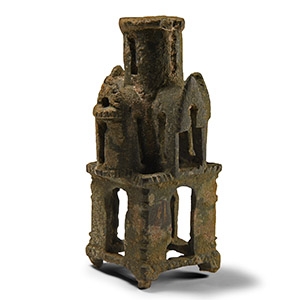
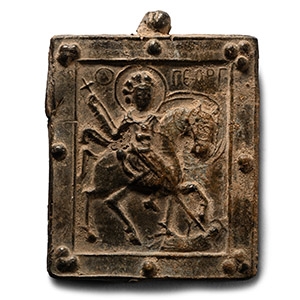
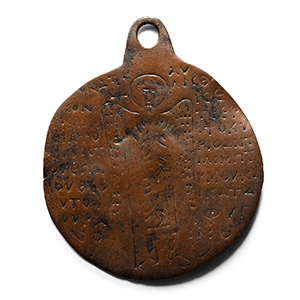

.jpg)


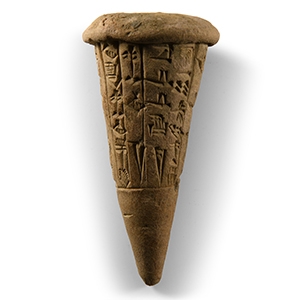

.jpg)
